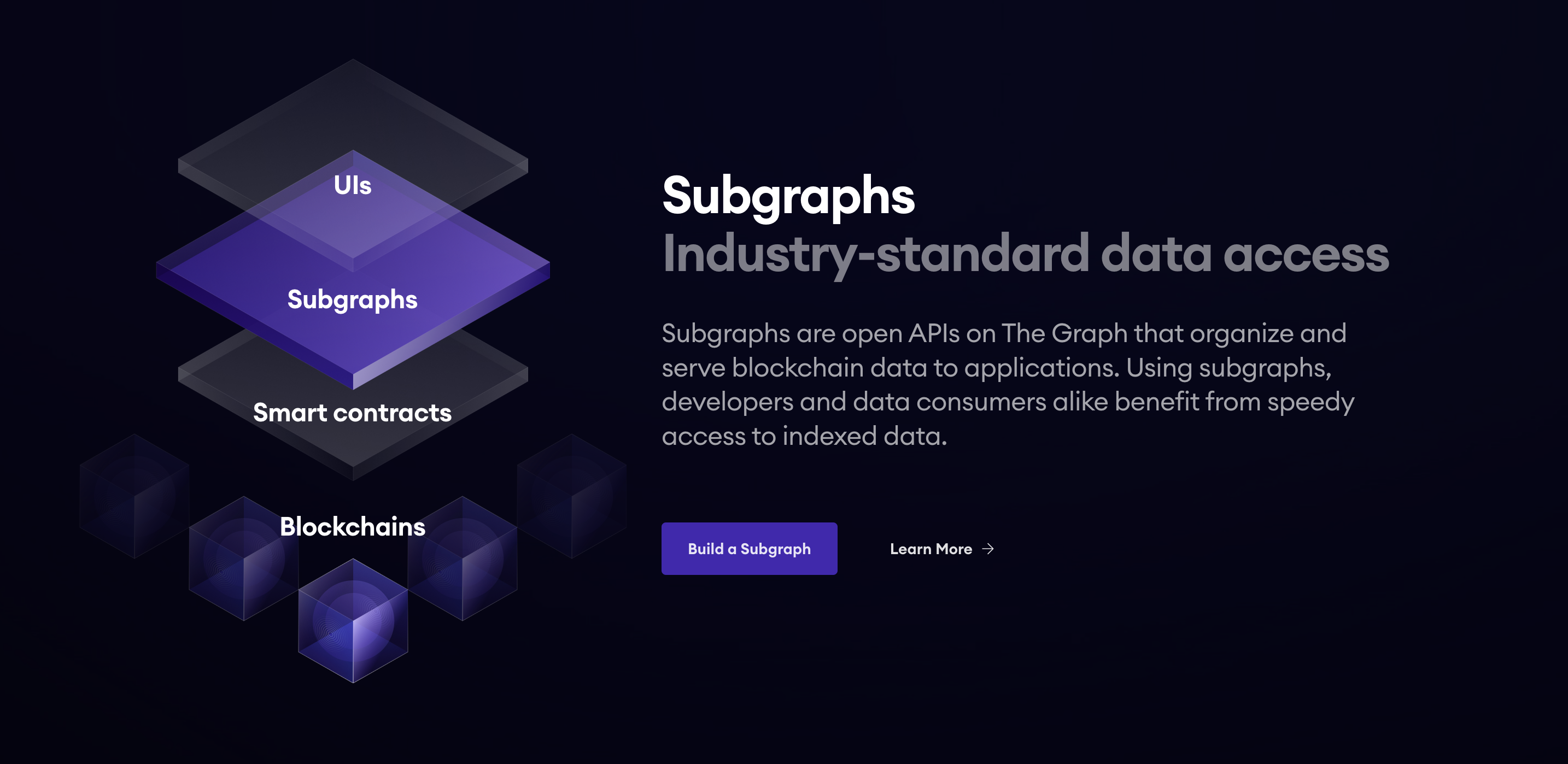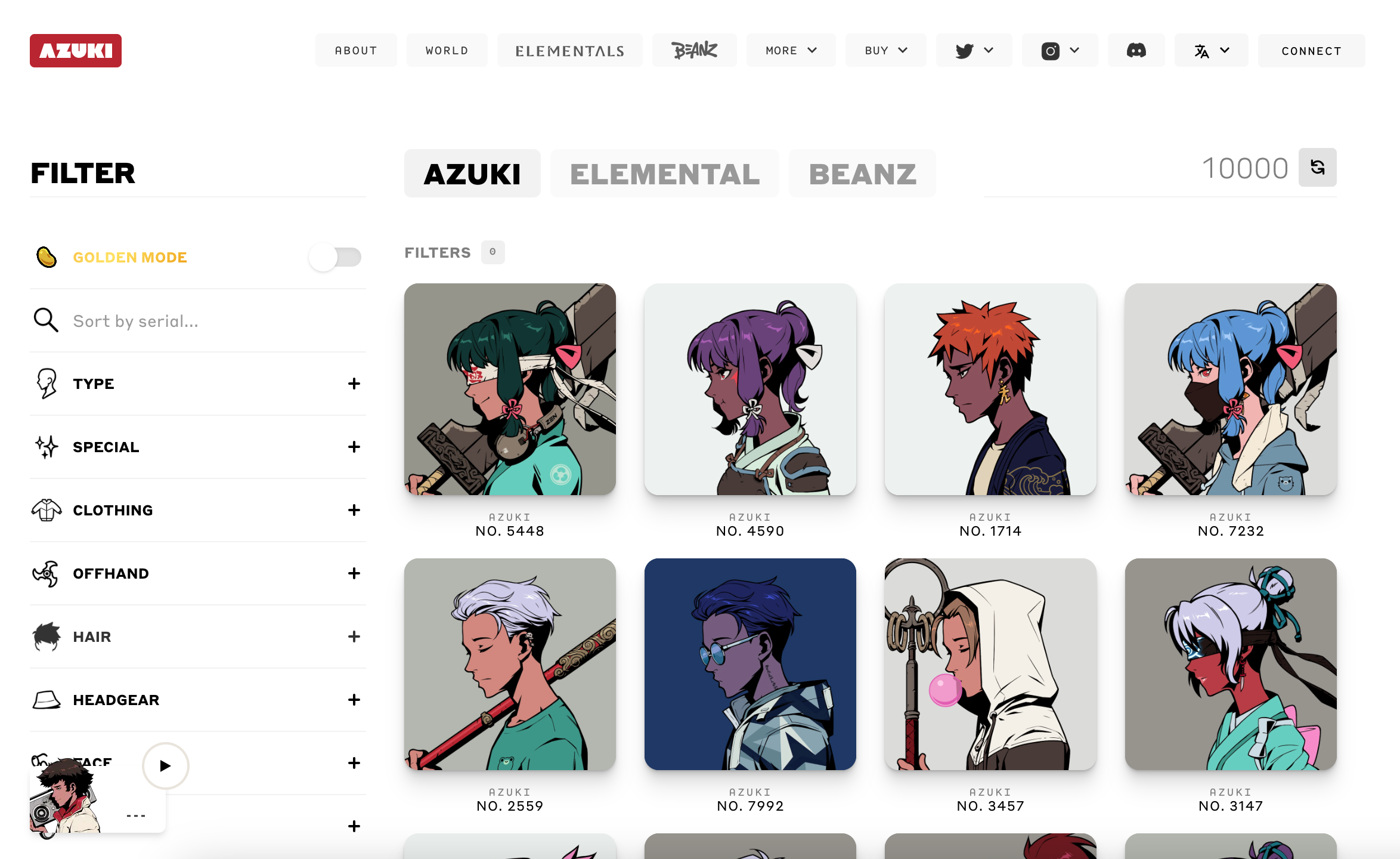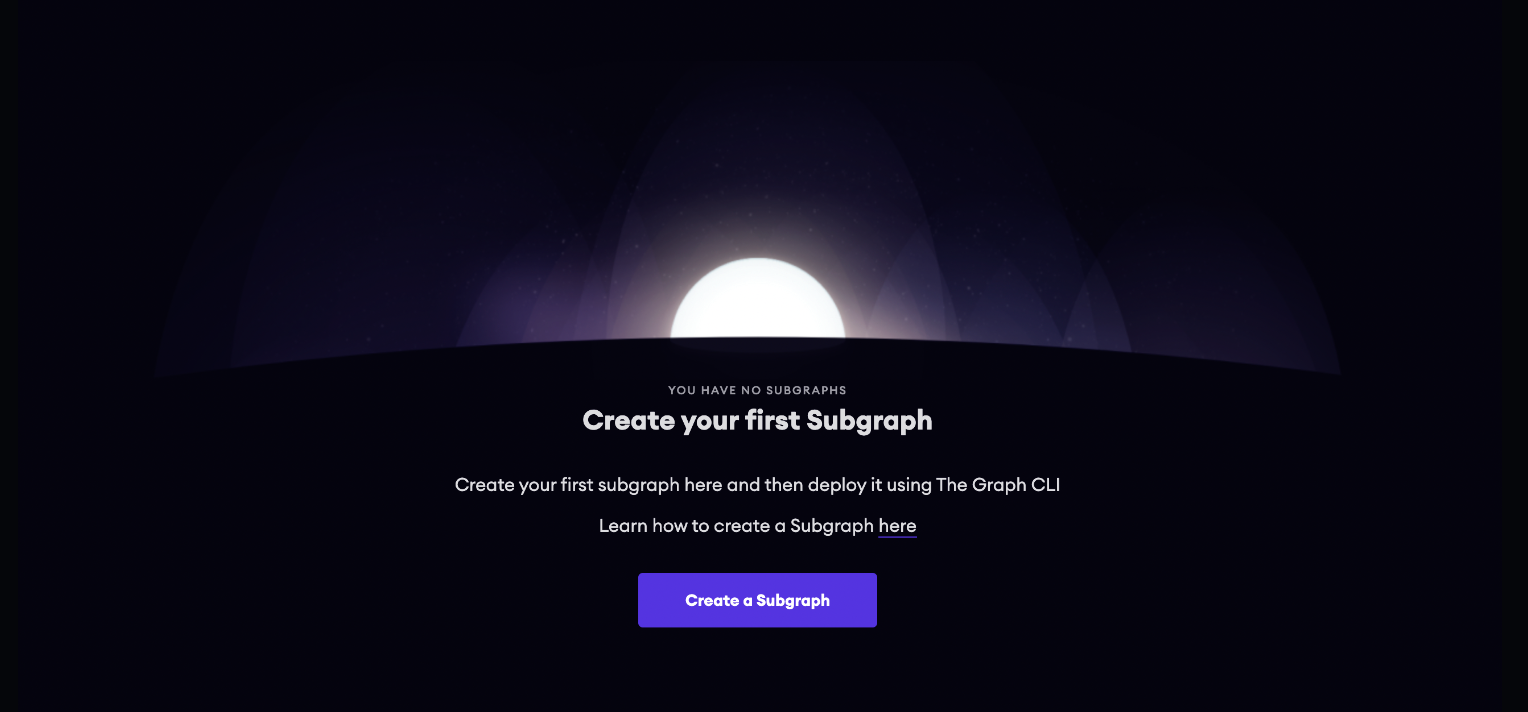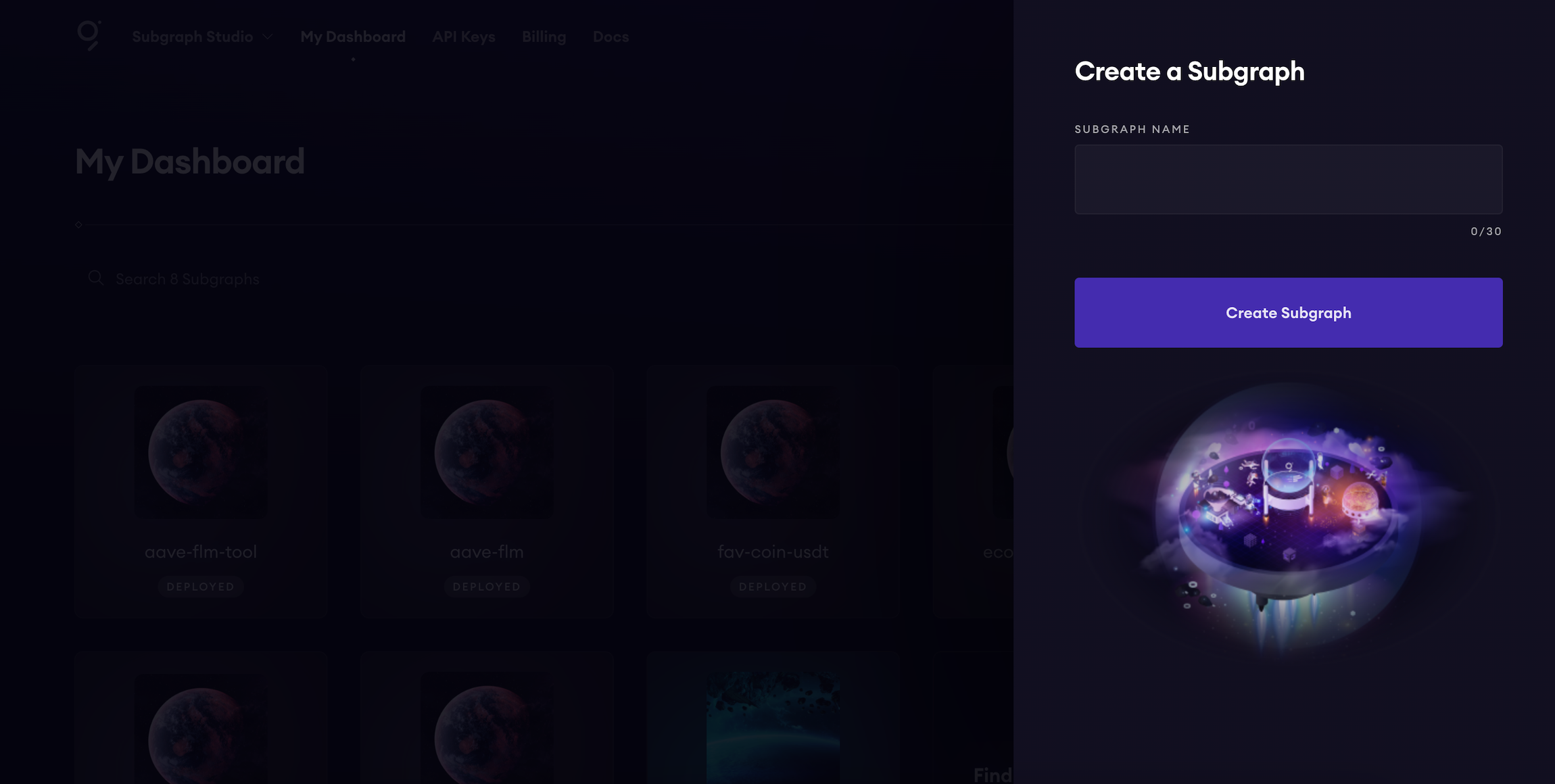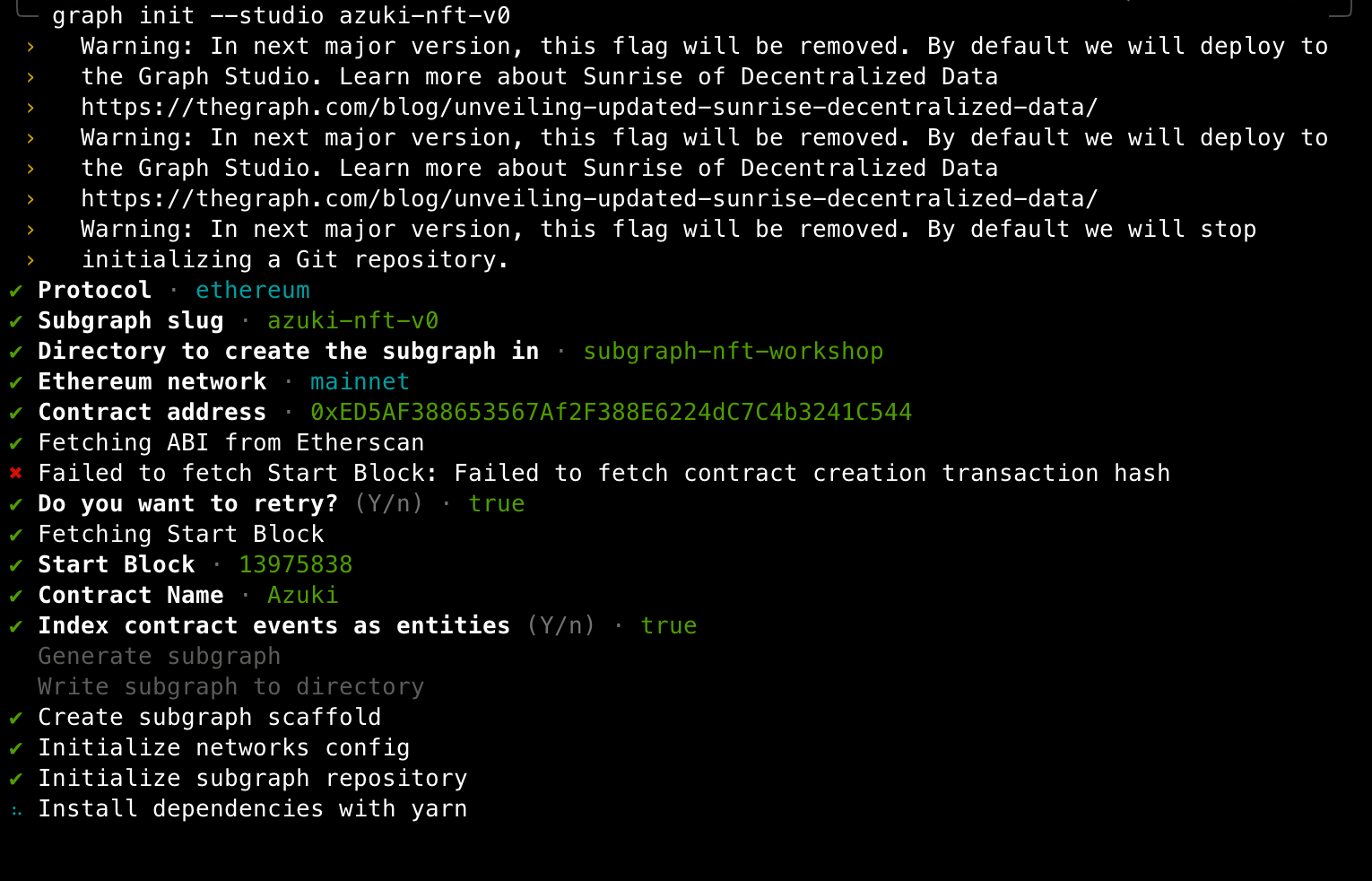In this workshop, we would be building and deploying a subgraph for the Azuki NFT Project.
- Description
- About Azuki & NFTs 🎭
- Software Requirements
- Prerequisites
- Setting Up a Subgraph
- Initializing a Subgraph
- Building & Deploying Subgraph
- Important files generated during subgraph init and build
Formed by Chiru Labs, Azuki is an anime brand crafting stories and experiences that blur the lines between the physical and digital worlds. Here are some things they’ve created so far.
Boring stuff about NFTs that you already know 🤔
What's an NFT?
Imagine a digital certificate of ownership for anything unique online, like art, music, or even tweets. That's essentially what an NFT (Non-Fungible Token) is.
Characteristics of NFTs
-
Unique: Unlike regular cryptocurrencies (fungible tokens), each NFT is one-of-a-kind and cannot be replaced by another. Think of it like a rare trading card instead of interchangeable cash.
-
Stored on a blockchain.
-
Smart contracts powered.
-
Token standards define properties: Standards like ERC-721 ensure compatibility and interoperability between different platforms and marketplaces.
-
The Graph CLI installed
-
For
npm, install the CLI using this command:
npm install -g @graphprotocol/graph-cli- For
yarn, install the CLI using this command:
yarn global add @graphprotocol/graph-cli- A decent IDE. VS Code is a great option!
To follow along on this workshop you need the following:
-
Some knowledge of GraphQL
-
A good understanding of how events work in solidity. This YouTube Video By Patrick Collins nails it!
-
Some experience with TS/JS (optional)
-
0xED5AF388653567Af2F388E6224dC7C4b3241C544
-
Navigate to The Graph Studio.
-
Click on Connect Wallet and authenticate a wallet address
-
Once authenticated, click on Create a Subgraph.
- Give the subgraph a name and click Continue. In our case, we named ours
azuki-nft-v0
So we have successfully setup our Subgraph in The Graph studio. Now, would initialize the subgraph using this command in your terminal:
graph init --studio azuki-nft-v0
Replace azuki-nft-v0 with the name of your subgraph.
Now, we would go through an interactive prompt in our CLI as below:
-
Choose a Protocol: click on Ethereum
-
Fill subgraph-slug: enter the name of your subgraph --
azuki-nft-v0 -
Directory to create the subgraph in: you can enter the subgraph slug or a different non-existent directory --
azuki-nft-v0 -
Choose an Ethereum network: click on mainnet
-
Contract address: We would be using the deployed Azuki contract on Ethereum mainnet --
0xED5AF388653567Af2F388E6224dC7C4b3241C544 -
In case fetching of start block fails, leave the default
truefor the Do you want to retry? (Y/n): prompt -
Contract Name:
Azuki -
Accept the Index contract events as entities (Y/n) prompt as
true
Before we build and deploy the subgraph to the Studio, we need to authenticate within the CLI: graph auth --studio [DEPLOY_KEY].
Now, cd into the directory containing your initialized subgraph. In our case, it is azuki-nft-v0.
Paste graph codegen && graph build command in your terminal to build subgraph.
Run the following command to deploy your subgraph:
graph deploy --studio azuki-nft-v0Fill the Which version label to use? (e.g. "v0.0.1") prompt as v0.0.1
This is a YAML file containing the main configuration and definition for the subgraph
The graph init --studio azuki-nft-v0 command prepopulates our yaml file with some configurations below:
Code:
specVersion: 1.0.0
indexerHints:
prune: auto
schema:
file: ./schema.graphql
dataSources:
- kind: ethereum
name: Azuki
network: mainnet
source:
address: "0xED5AF388653567Af2F388E6224dC7C4b3241C544"
abi: Azuki
startBlock: 13975838
mapping:
kind: ethereum/events
apiVersion: 0.0.7
language: wasm/assemblyscript
entities:
- Approval
- ApprovalForAll
- OwnershipTransferred
- Transfer
abis:
- name: Azuki
file: ./abis/Azuki.json
eventHandlers:
- event: Approval(indexed address,indexed address,indexed uint256)
handler: handleApproval
- event: ApprovalForAll(indexed address,indexed address,bool)
handler: handleApprovalForAll
- event: OwnershipTransferred(indexed address,indexed address)
handler: handleOwnershipTransferred
- event: Transfer(indexed address,indexed address,indexed uint256)
handler: handleTransfer
file: ./src/azuki.tsREFACTORED CODE ✍️
We would be changing the yaml file to fit our needs for the specific subgraph we've developed as follows:
Code
specVersion: 1.0.0
schema:
file: ./schema.graphql
dataSources:
- kind: ethereum
name: Azukis
network: mainnet
source:
address: "0xED5AF388653567Af2F388E6224dC7C4b3241C544"
abi: Azuki
startBlock: 13975838
mapping:
kind: ethereum/events
apiVersion: 0.0.7
language: wasm/assemblyscript
entities:
- User
- NFT
- Transfer
abis:
- name: Azuki
file: ./abis/Azuki.json
eventHandlers:
- event: Transfer(indexed address,indexed address,indexed uint256)
handler: handleTransfer
file: ./src/azuki.tsContains a description of the data that clients can request from our subgraph and how to query it via GraphQL.
As for the subgraph.yaml file, the graph init --studio azuki-nft-v0 command prepopulates our graphql file with the entities below as per events stated within the smart contract:
Code:
type Approval @entity(immutable: true) {
id: Bytes!
owner: Bytes! # address
approved: Bytes! # address
tokenId: BigInt! # uint256
blockNumber: BigInt!
blockTimestamp: BigInt!
transactionHash: Bytes!
}
type ApprovalForAll @entity(immutable: true) {
id: Bytes!
owner: Bytes! # address
operator: Bytes! # address
approved: Boolean! # bool
blockNumber: BigInt!
blockTimestamp: BigInt!
transactionHash: Bytes!
}
type OwnershipTransferred @entity(immutable: true) {
id: Bytes!
previousOwner: Bytes! # address
newOwner: Bytes! # address
blockNumber: BigInt!
blockTimestamp: BigInt!
transactionHash: Bytes!
}
type Transfer @entity(immutable: true) {
id: Bytes!
from: Bytes! # address
to: Bytes! # address
tokenId: BigInt! # uint256
blockNumber: BigInt!
blockTimestamp: BigInt!
transactionHash: Bytes!
user: User! @derivedFrom(field: "transfers")
}REFACTORED CODE ✍️
We would refactor our graphql file to serve our subgraph needs as follows:
Code
type User @entity {
# Unique identifier for the user
id: ID!
# Ethereum address of the user, used as the primary key
address: Bytes!
# List of NFTs currently owned by this user
nfts: [NFT!]! @derivedFrom(field: "owner")
# List of transfers initiated by this user
transfers: [Transfer!]! @derivedFrom(field: "from")
}
type Transfer @entity {
# Unique identifier for the transfer
id: ID!
# User initiating the transfer
from: User!
# User receiving the transfer
to: User!
# Identifier of the transferred NFT
tokenId: BigInt
# Timestamp of the transfer
timestamp: BigInt
}
type NFT @entity {
# Unique identifier for the NFT
id: ID!
# Unique identifier for the NFT
tokenId: BigInt!
# Owner of the NFT
owner: User!
# URI associated with the NFT
tokenURI: String
}On your terminal, run graph codegen command to generate entity types - files that define the types of data a particular subgraph exposes, ensuring type safety in your GraphQL operations.
This file holds the mapping.eventHandlers as specified in the subgraph.yaml file. We would be working with just a single eventHandler - handleTransfer.
We refactor handleTransfer function to take the emitted Transfer event data and transform as per needs to entites listed in subgraph.yaml file.
Code
// relevant contract and event types
import { Transfer as TransferEvent } from "../generated/Azuki/Azuki";
// generated entities
// import { User, NFT, Transfer } from "../generated/schema";
// helpers
import {
createOrLoadNFT,
createOrLoadTransfer,
createOrLoadUser,
} from "./helpers";
// Event handler for Transfer events
export function handleTransfer(event: TransferEvent): void {
// let's handle User entity
const user = createOrLoadUser(event.params.from.toHexString());
user.address = event.params.from;
user.save();
// let's handle Transfer entity
const transfer = createOrLoadTransfer(event.transaction.hash.toHexString());
transfer.from = user.id;
transfer.to = event.params.to;
transfer.tokenId = event.params.tokenId;
transfer.timestamp = event.block.timestamp;
transfer.save();
// let's handle NFT entity
const nft = createOrLoadNFT(event.params.tokenId.toString());
nft.owner = user.id;
nft.tokenId = event.params.tokenId;
nft.tokenURI = `/${event.params.tokenId.toString()}`;
nft.save();
}BUILDING
To prepare our subgraph for deployment, paste the command graph build in your terminal. You'd notice a build directory got created with some files.
What the graph build command does are:
- validation checks to ensure our subgraph meets the required standards and is ready for deployment.
- generation of AssemblyScript WASM files containing compiled bytecode that get executed when deployed to The Graph nodes
DEPLOYING
Paste the command graph deploy --studio azuki-nft-v0 to deploy your subgraph.
Once syncing is completed, test the query and watch the power of The Graph return the indexed, requested data 🎊💪
A live version of this subgraph can be found on the Subgraph studio. Switch to the latest version - v0.0.7 (as of this writing) and query away 🚀🚀
